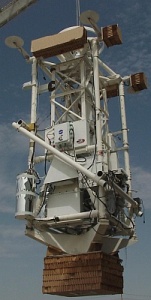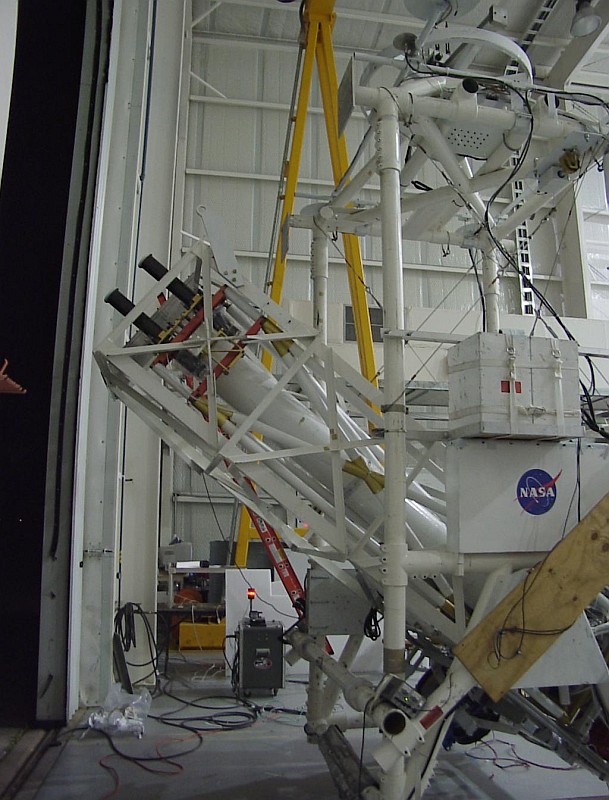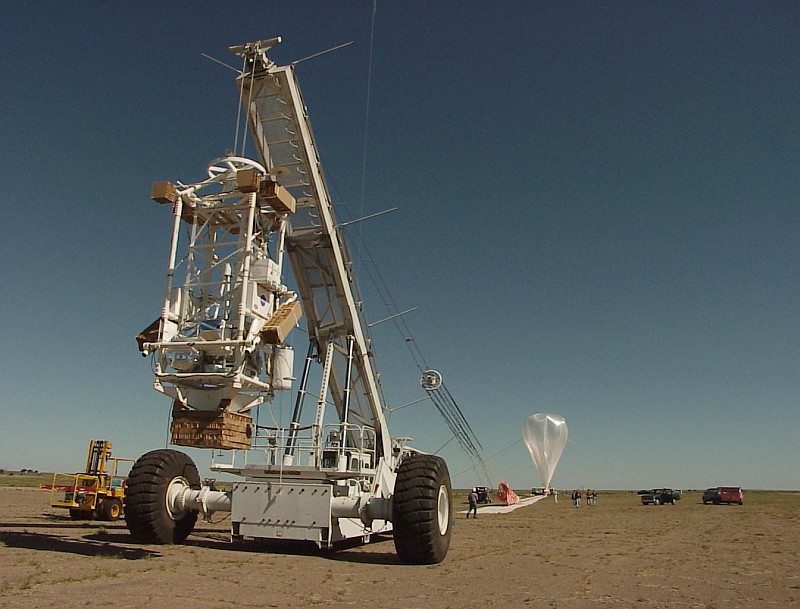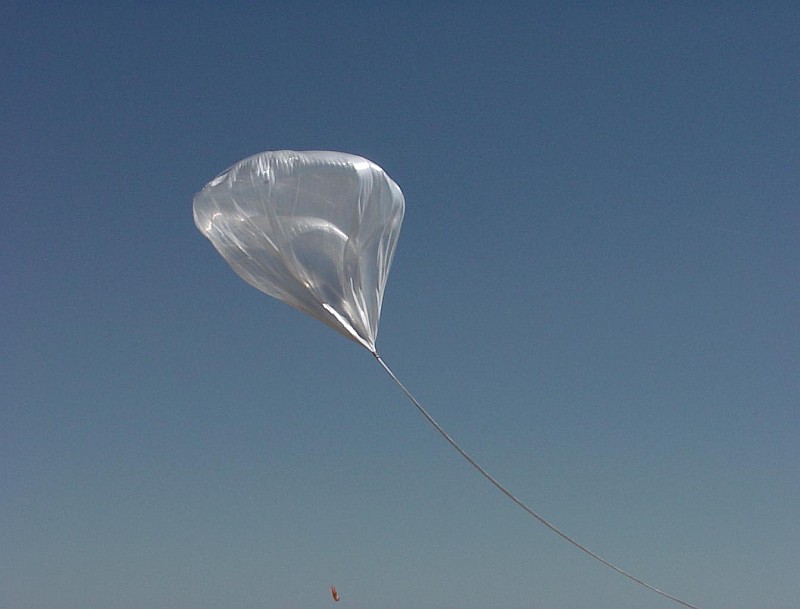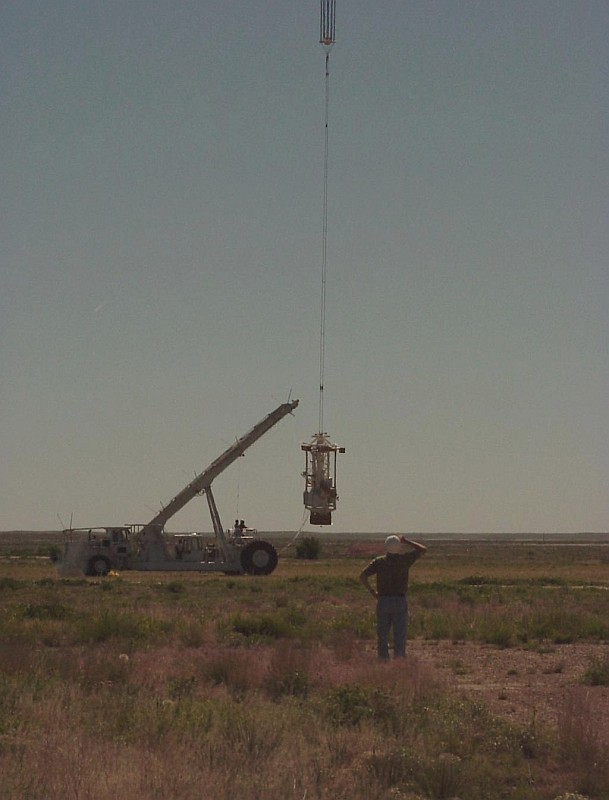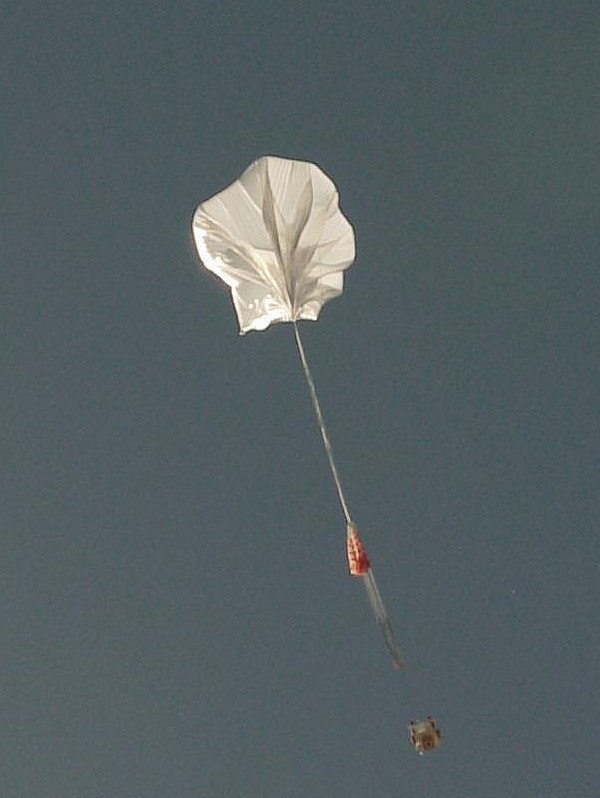Purpose of the flight and payload description
HERO was an X-Ray telescope and the first one aimed to obtain focused images of astronomical X-ray sources at hard X-ray energies (20-75 keV).
The key component (the hard X-ray optics) are full-shell electroformed-nickel-replicated (ENR) mirrors coated with iridium to enhance high-energy reflectivity. As the critical grazing angle for reflection varies approximately inversely with energy, these mirrors employ smaller angles than their low-energy counterparts and consequently have smaller diameters and collecting areas per shell. The mirrors have a 6 meter focal length.
To exploit the full potential of the HERO optics necessitates a balloon gondola that can provide commensurate pointing accuracy, stability, and pointing knowledge. The HERO gondola utilizes a coarse aspect system for slewing based on a differential global positioning system (GPS) and a fine inertial-mode pointing system that uses a novel day/night aspect camera system to update onboard gyroscopes. The total payload dimensions are 25 feet long, 6.5 ft wide and 16 ft high.
Details of the balloon flight
Balloon launched on: 5/23/2001 at 16:22 utc
Launch site: Scientific Flight Balloon Facility, Fort Sumner, (NM), US
Balloon launched by: National Scientific Balloon Facility (NSBF)
Balloon manufacturer/size/composition: Zero Pressure Balloon Raven - 39.570.000 cu ft - 0.8 Mil. - SF3-39.57-.8/.8/.8-NA
Balloon serial number: W39.57-2-23
Flight identification number: 497N
End of flight (L for landing time, W for last contact, otherwise termination time): 5/24/2001 at 12:49 utc
Balloon flight duration (F: time at float only, otherwise total flight time in d:days / h:hours or m:minutes - ): 24 h
Landing site: 25 miles of South King, Arizona, US
The balloon was launched by dynamic method assisted by launch vehicle on May 23, 2001.
The balloon flight spent 17 hr at a float altitude of 39 km during the day and 37 km at night.
During this flight -a test one-, the hard X-ray telescopes were pointed at the Crab Nebula, Cyg X-1, and GRS 1915+105, where they captured the First high-energy focused images of cosmic sources. This test flight confirmed the stability of the optical bench and the ability of the attitude control system to hold X-ray targets with suficient stability for extended periods of time.
External references
- HERO website Marshall Space Flight Center, NASA
- Balloon Flight 2001 of the HERO Engineering Test Payload NASA information
- First Images from HERO, a Hard X-Ray Focusing Telescope The Astrophysical Journal, 568:432-435, 2002 March 20
- HERO : High-Energy Replicated Optics for a Hard-X-Ray Balloon Payload Proc. SPIE Vol. 4138, p. 147-153, X-Ray Optics, Instruments, and Missions IV
- HERO will provide new view of X-ray universe Science NASA
- The Development of Hard-X-Ray Optics at MSFC Proc. SPIE Vol. 4851, p. 631-638, X-Ray and Gamma-Ray Telescopes and Instruments for Astronomy
- The HERO Program, high-energy replicated optics for a hard-x-ray balloon payload Proc. SPIE Vol. 3765, p. 816-821, EUV, X-Ray, and Gamma-Ray Instrumentation for Astronomy X
- Where no Telescope Has Gone Before Science NASA
674If you consider this website interesting or useful, you can help me to keep it up and running with a small donation to cover the operational costs. Just the equivalent of the price of a cup of coffee helps a lot.

